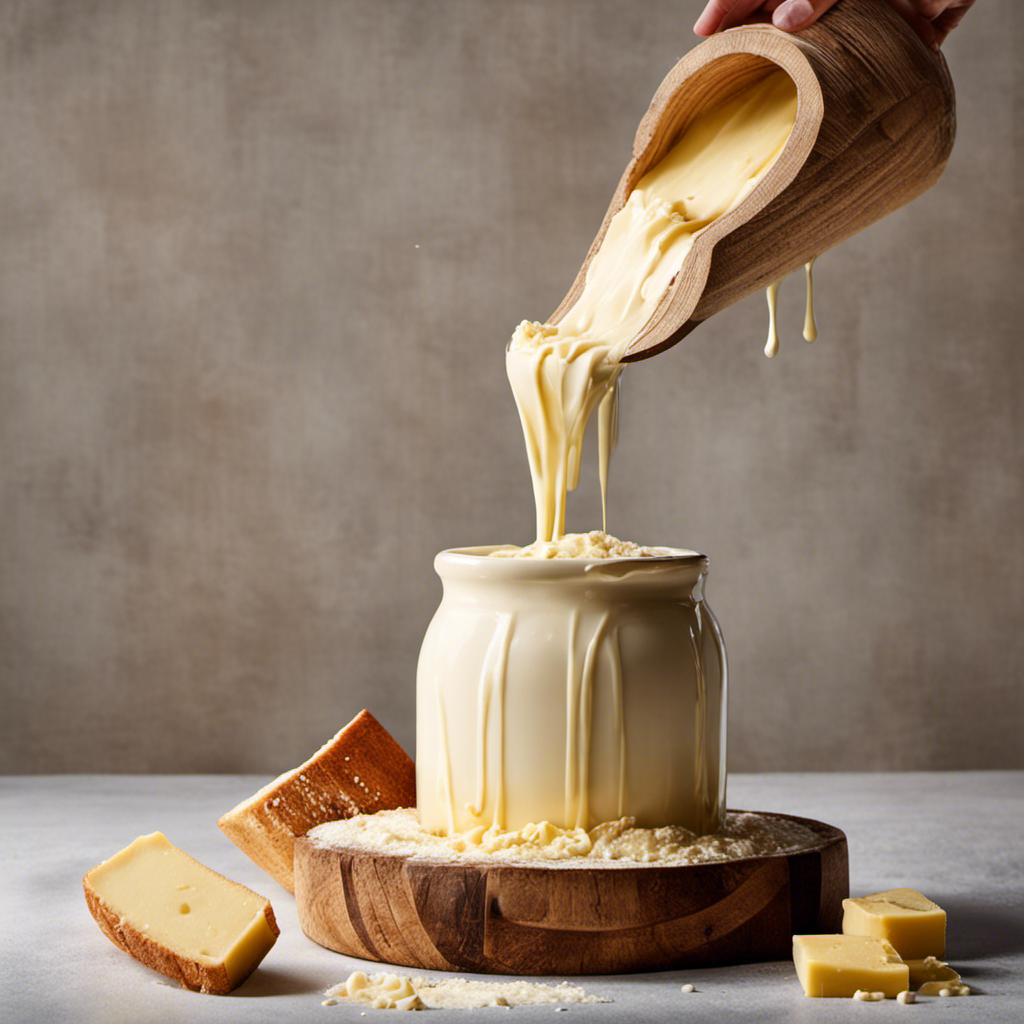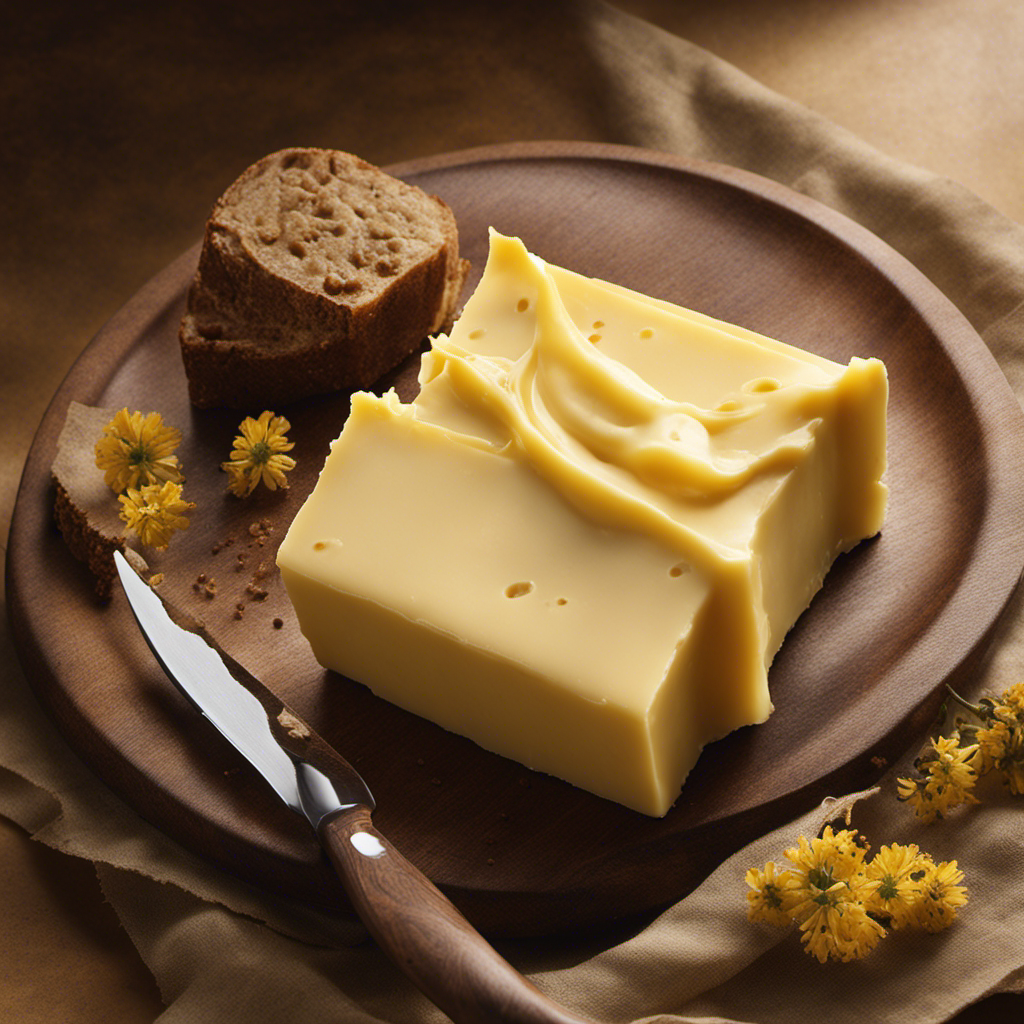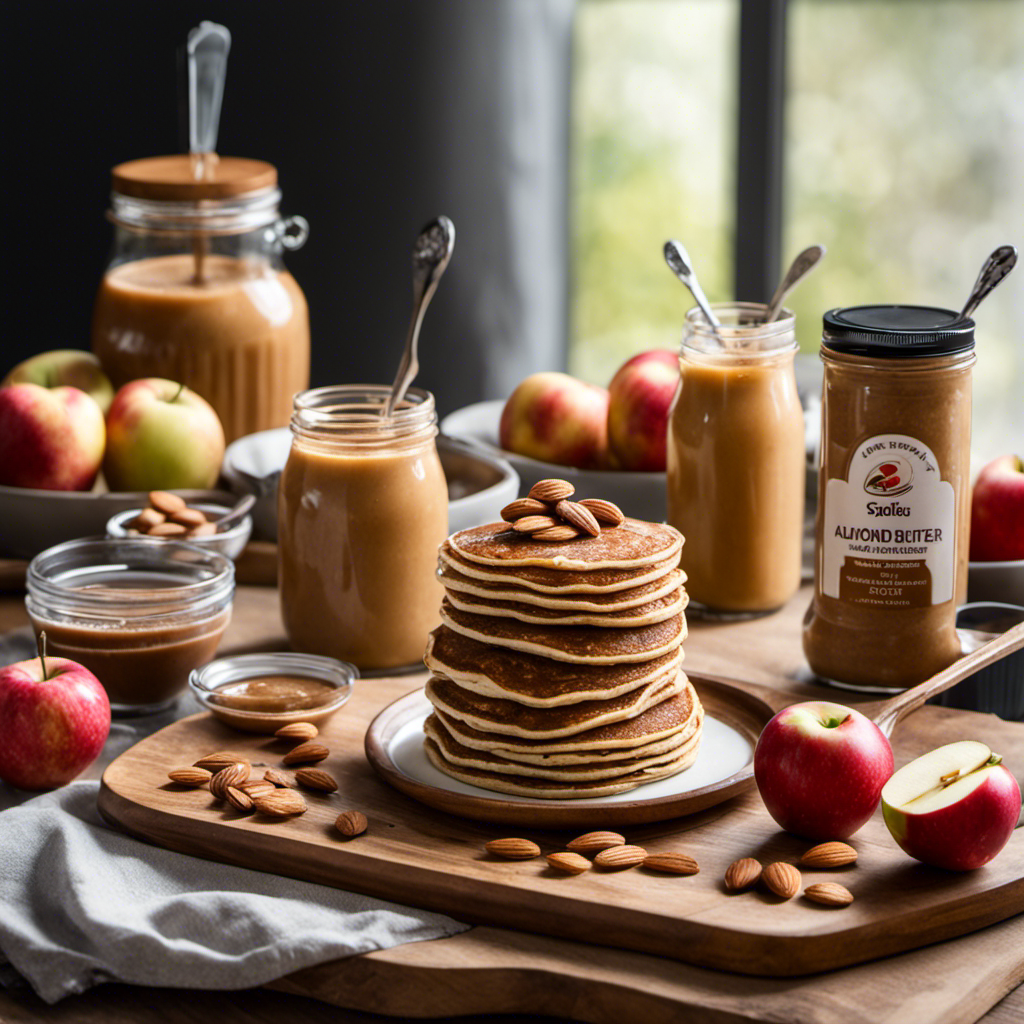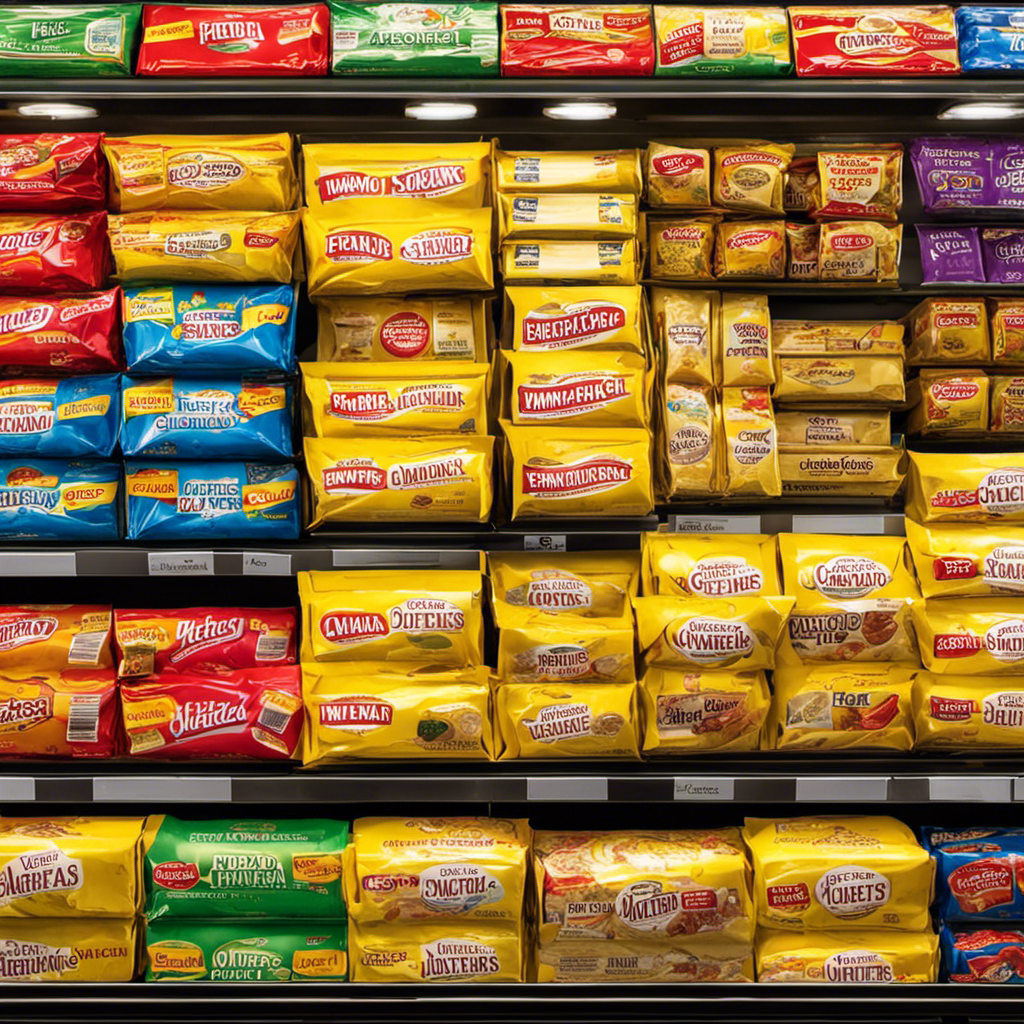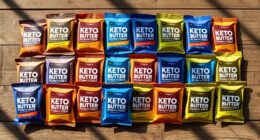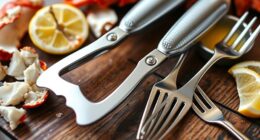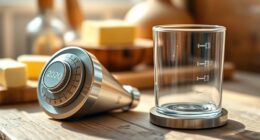I absolutely love butter! Its smooth, creamy texture, paired with the delicious taste it adds, elevates every dish.
But have you ever wondered how this golden spread is made from milk? In this article, I’ll take you through the fascinating process of churning milk into butter.
From separating the cream to adding cultures or starter, I’ll explain the precise technique behind this culinary alchemy.
By the end, you’ll have a newfound appreciation for the art of making homemade butter.
Key Takeaways
- The churning process is the key step in butter production, where cream is agitated to separate fat from the liquid.
- Cream separation techniques, such as centrifugation, gravity separation, and skimming, are crucial in differentiating cream from milk.
- Adding cultures or starter to the cream is essential for the fermentation process and contributes to the unique flavor profile of butter.
- Different butter-making techniques and equipment, including traditional methods and modern tools, are used worldwide to produce butter.
The Churning Process
I love how the churning process transforms cream into delicious butter. The science behind churning is fascinating. When cream is agitated, the fat globules in the cream cling together, separating from the liquid. This separation occurs due to the agitation causing the fat globules to collide and break, releasing their fat content.
The continuous agitation causes the fat to coalesce, forming butter. This process can be done manually using a churn or mechanically in modern butter-making factories. The history of butter making dates back thousands of years, with evidence of butter production found in ancient civilizations such as Egypt and Mesopotamia.
Initially, butter was made by shaking animal skin containers filled with cream. Over time, churns were developed to make the process more efficient. Today, churning is still the key step in butter production, ensuring that creamy, delicious butter is made from milk.
Separating the Cream
Using a centrifuge, the cream is separated from the milk during the butter-making process. Cream separation techniques are crucial in differentiating cream from milk. Here are three important aspects to consider:
-
Centrifugation: This process involves spinning the milk in a high-speed centrifuge. The centrifugal force causes the denser cream to separate from the lighter milk.
-
Gravity separation: Another method is allowing the milk to sit undisturbed, allowing gravity to naturally separate the cream, which rises to the top.
-
Skimming: Skimming involves manually removing the cream from the surface of the milk. This method requires precision and careful handling.
Adding Cultures or Starter
To create the desired flavor profile, cultures or starter are added to the cream during the butter-making process. These cultures are essential for the fermentation process, which helps to develop the distinct taste and aroma of butter. There are different types of cultures used, each contributing to the final product’s unique characteristics. Here is a table showcasing some common cultures and their effects:
| Type of Culture | Effect on Butter |
|---|---|
| Lactic Acid Bacteria | Provides a tangy flavor and enhances the creamy texture. |
| Mesophilic Culture | Adds a mild and slightly sweet taste to the butter. |
| Thermophilic Culture | Imparts a more robust and complex flavor to the butter. |
| Propionic Acid Bacteria | Creates a nutty and slightly fruity flavor in the butter. |
The Butter-making Technique
During the butter-making process, cultures or starter are added to the cream to create the desired flavor profile. The technique used to make butter involves several steps that can vary depending on the equipment used and the traditions followed in different parts of the world. Here are some key points to consider:
-
Different types of butter making equipment:
-
Churns: Traditional wooden or metal churns are still used in some places to manually agitate the cream until butter forms.
-
Electric churns: These modern machines automate the churning process, making it easier and faster.
-
Blender or food processor: These appliances can be used to churn smaller quantities of cream into butter.
-
Butter making traditions around the world:
-
Hand-churned butter: In some countries, like India, hand-churning butter is still a common practice, often done in large earthen pots.
-
Cultured butter: In European countries, cultures are added to the cream to create a tangy and rich flavor in the butter.
-
Clarified butter: In Middle Eastern and Indian cuisines, butter is heated to separate the milk solids from the fat, resulting in clarified butter used for cooking or ghee.
Storing and Using Homemade Butter
After churning, I store my homemade butter in an airtight container to keep it fresh and spreadable. But what about long term storage options? Well, homemade butter can be frozen for up to 6 months without losing its quality. Simply wrap it tightly in plastic wrap or place it in a freezer-safe container. When you’re ready to use it, thaw it in the refrigerator overnight.
Now, let’s talk about creative ways to use homemade butter. Of course, you can spread it on toast or use it in baking recipes to enhance the flavor. But have you ever considered using it in savory dishes? Try melting a pat of homemade butter over steamed vegetables for a rich and delicious twist. Or mix it with herbs and spices to create a flavorful compound butter that can be used to elevate grilled meats or roasted vegetables. The possibilities are endless when it comes to homemade butter!
| Storage Tips | Usage Ideas | Recipe Suggestions |
|---|---|---|
| Freeze for long term | Spread on toast | Herb-infused compound butter |
| Use airtight container | Enhance baking recipes | Buttered steamed vegetables |
| Thaw in refrigerator | Flavor grilled meats | Butter cookies |
| Roast vegetables | Buttercream frosting | |
| Buttered pasta dishes |
Frequently Asked Questions
What Are Some Common Uses for Homemade Butter?
Some common uses for homemade butter include:
- Spreading it on toast or bread
- Using it as a cooking fat for sautéing or frying
- Incorporating it into baked goods for added richness and flavor.
Homemade butter has several benefits:
- It is free of preservatives and additives found in store-bought butter.
- It allows for customization by adding herbs, spices, or other flavorings to create unique and personalized variations.
How Long Does Homemade Butter Typically Last Before It Goes Bad?
To properly store homemade butter, it’s important to keep it refrigerated in an airtight container. This will help to maintain its freshness and prevent spoilage.
Factors that can cause homemade butter to spoil faster include exposure to air, high temperatures, and contamination from bacteria.
It’s recommended to consume homemade butter within 2-3 weeks of making it. Proper storage and handling are crucial to ensure the butter stays safe to eat.
Can I Use Any Type of Milk to Make Butter?
When making butter, the type of milk you use can affect the final result. Different types of milk, like cow’s milk, goat’s milk, or buffalo milk, have different fat content and flavor profiles.
Cow’s milk is the most commonly used and provides a creamy and mild taste.
Goat’s milk has a stronger flavor.
Buffalo milk has a higher fat content, resulting in a richer butter.
It’s important to consider the pros and cons of each type of milk for the desired outcome.
Is It Necessary to Use a Specific Type of Churn to Make Butter?
Using a traditional churn isn’t necessary to make butter, but it offers several benefits.
There are different methods of churning butter, including using a blender or a stand mixer. However, a traditional churn provides a more authentic and traditional experience.
It allows for a slower churning process, which results in a creamier and richer butter.
Additionally, using a traditional churn adds a certain charm and nostalgia to the process of making butter.
Can I Add Flavorings or Seasonings to My Homemade Butter?
I can definitely add flavorings or seasonings to my homemade butter. There are different methods to make flavored butter.
One way is to mix in herbs, spices, or other ingredients like garlic or honey while churning the cream.
Another method involves blending the butter with the desired flavorings after it has been made.
This allows for a variety of delicious options to enhance the taste of my homemade butter.
Conclusion
In conclusion, by following the churning process, separating the cream, and adding cultures or starter, butter can be made from milk.
Despite any initial doubts about the difficulty of making butter at home, the technique is relatively simple and achievable.
With homemade butter, you can enjoy the rich and creamy taste that’s unmatched by store-bought alternatives.
So, why not give it a try and indulge in the sensory delight of freshly made butter?
